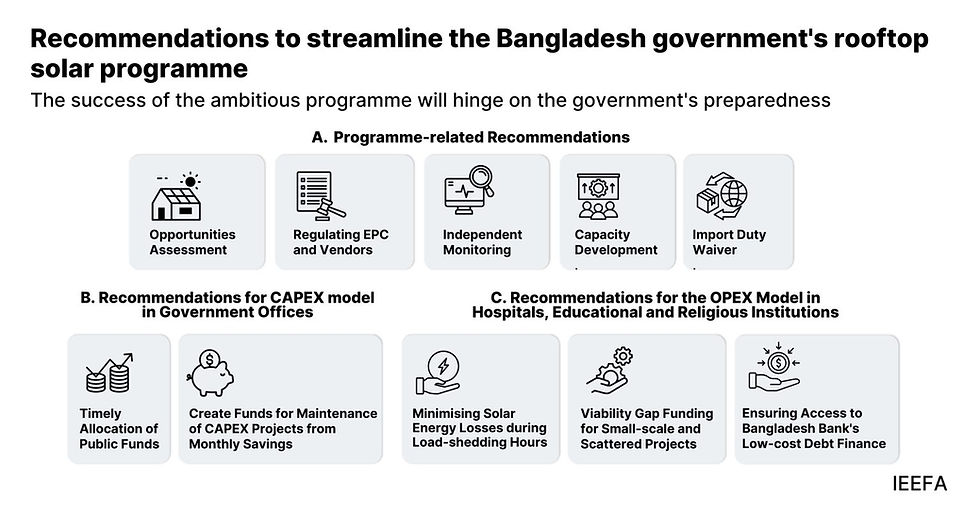
Aug 18, 2025
| Staff Reporter | Just Energy News
Amid the ongoing energy crisis in Bangladesh, the government’s announcement of an ambitious programme to install 3,000 megawatts (MW) of rooftop solar capacity by December 2025 has been welcomed as a timely move to boost renewable energy.
However, a new briefing note by the Institute for Energy Economics and Financial Analysis (IEEFA) raises concerns about the feasibility of achieving the target within the given timeframe. According to IEEFA, Bangladesh added only 245MW of rooftop solar capacity between June 2008 and June 2025. To meet the new goal, the country would need to ramp up its deployment more than twelvefold in just six months — a scale-up that experts warn may be overly ambitious.
“As government offices, hospitals, educational and religious institutions are unlikely to offer adequate sanctioned load to accommodate 3,000MW of rooftop solar, the Sustainable and Renewable Energy Development Authority (SREDA) should first assess and document the rooftop potential of these buildings,” said Shafiqul Alam, IEEFA’s lead energy analyst for Bangladesh and the author of the note.
Alam also pointed out that the timeline could be unrealistic given the bureaucratic processes involved. “Fund allocation, tendering, bid evaluation, issuing work orders, and implementation all take time. Extending the December 2025 deadline may be necessary,” he added.
The briefing further notes that only 15 to 20 high-quality Engineering, Procurement and Construction (EPC) companies operate in the sector, potentially limiting the pace at which installations can proceed. Under the new programme, government offices will adopt the CAPEX model — funded publicly with upfront investment — while hospitals and educational institutions will use the OPEX model, which requires no initial cost and is paid over time.
Each model comes with trade-offs. “The CAPEX model can enable faster deployment and higher savings, but risks poor coordination, rushed contractor selection, and inadequate maintenance. Conversely, while the OPEX model ensures quality and reduces upfront barriers, it offers lower savings and faces challenges such as rural load-shedding and limited investor interest in smaller, scattered projects,” Alam explained.
Another technical challenge highlighted in the report is the risk of soiling, which can significantly reduce solar energy output. The IEEFA recommends that government offices under the CAPEX model create a fund from monthly savings to cover long-term maintenance contracts. To ensure the long-term success of the initiative, the report also urges utilities to address load-shedding issues in rural areas, particularly under the OPEX model where uninterrupted solar output is critical to financial viability.
The IEEFA briefing draws lessons from neighbouring countries that have made stronger progress in rooftop solar adoption. For example, Pakistan’s success has been driven by an energy supply crunch and rising tariffs, while Sri Lanka overcame financing barriers with support from a multilateral agency. India, meanwhile, boasts over 18GW of rooftop solar as of May 2025, aided by consistent policy and regulatory support.
“Bangladesh’s rooftop solar sector is still at a nascent stage. Capacity development of key stakeholders, along with strong policy backing and an independent monitoring mechanism, will be critical to ensure projects are implemented effectively and deliver their intended benefits,” Alam concluded.
News Link: Govt’s 3,000MW rooftop solar plan faces feasibility concerns: IEEFA